12 Workout Myths (And Why They're False)
As a Denver personal trainer, I have encountered many theories and myths over the last twenty years. Despite the scientific evidence, many health and fitness companies continue to prey on consumers’ insecurities and fears and message false claims. While this list of offenses is extensive, the following twelve myths are the most common. It’s time to discover the truth and refine how you think about fitness.
Myth #1: Strength training will make you bulk up.
Truth: It’s pretty hard for women to bulk up from a regular strength-training routine because they don’t have as much testosterone as men (the difference in this hormone level makes men more prone to bulking up). If weight loss is your goal, strength training can help you lean out, but you must also keep your nutrition in check. “Muscle is metabolically active,” explains Adam Rosante, C.S.C.S., author of The 30-Second Body. Simply maintaining lean muscle mass requires higher energy, he explains. “So, the more lean muscle you have, the more calories your body will burn at rest.”
Myth #2: You can focus on losing fat from specific body parts.
Truth: Spot training is not a thing. “Fat cells are distributed across your entire body,” says Rosante. “If you want to lose fat from a specific spot, you need to lose overall body fat.” High-intensity interval training can work wonders—after an intense workout, your body needs to take in oxygen at a higher rate to help it return to its natural resting state.
This process requires the body to work harder, burning more calories. Incorporating strength training can help you hit your goals, too, since having lean muscle will help your body burn more calories at rest.
Myth #3: Doing lots of cardio is the best way to lose weight.
Truth: If your goal is weight loss, logging endless miles on the treadmill isn’t always the best approach. Yes, traditional cardio workouts will help create a day-to-day calorie deficit (in addition to a healthy diet), which is essential for losing weight. But in the long term, since having more lean muscle mass helps your body burn more calories at rest, you’ll add to this deficit without doing a thing.
A combination of high-intensity cardio and strength training is a good idea. And don’t forget, having an intelligent nutrition plan is crucial to weight loss.
Myth #4:
Truth: While soreness and workout intensity are sometimes connected, how tired your muscles feel isn’t always a good indicator of a solid sweat session. “Being sore doesn’t necessarily mean it was a great workout—it just means that a significant amount of stress was applied to the tissue,” says exercise physiologist and trainer Pete McCall, M.S., C.S.C.S., host of the All About Fitness podcast.
“You can have a great workout and not be sore the next day,” he says. Proper recovery will help prevent achy muscles. “Refuel within the first 30 to 45 minutes post-exercise, stay hydrated, and get enough sleep—all of these things can help boost recovery and minimize soreness.”
Myth #5: You should give 100 percent effort during every workout.
Truth: Sort of. You should try your best to stay focused, be present, and give 100 percent during every workout. But not every gym session should require a post-160 heart rate level of intensity. And if you are sore every day, that may be a sign that you’re going too hard. “It’s not a good idea to exercise too high of an intensity too frequently—it limits recovery and can lead to overtraining,” says McCall.
Ideally, to avoid putting too much stress on your body, be mindful of the daily intensity and build in the appropriate recovery period.
Personal Trainer Wisdom: You can still challenge yourself, but you don't need to reach your anaerobic threshold every time (think 170 heart rate and up for most).
Myth #6: Strength training means using machines and heavy weights.
Truth: Strength training means using resistance to work your muscles—and that resistance doesn’t necessarily have to come from a machine or a heavyweight. (Hello, killer bodyweight exercises!) Aside from your body weight, you can use tools like kettlebells, medicine balls, and resistance bands to add resistance.
Myth #7: Sweating a ton means you worked your butt off.
Truth: Not necessarily. “You sweat because your core temperature increases,” explains exercise physiologist Tracy Hafen, founder of Affirmative Fitness. Yes, your muscles create heat when you exercise so that a tough workout will increase your internal temp, she explains, but it also has to do with the temperature you’re working out in. “For example, you’re not going to sweat as much in 40-degree weather as you would in 80-degree weather,” Hafen explains.
The humidity in the air also plays a role. “It’s not sweating that cools you off. It’s the evaporation [of sweat]. You’ll feel like you’re sweating more when it’s humid because sweat can’t evaporate.” (why you need to be careful exercising in hot, humid climates because your body temperature will keep increasing.)
Myth #8: Crunches are a great exercise for your abs.
Truth: Meh. Crunches probably aren’t going to hurt your core strength, but they’re not the most efficient exercise you can do to strengthen your midsection. “Your ab muscles are designed to work most effectively when standing upright,” says McCall. Of course, plenty of great abs exercises aren’t entirely upright.
Personal Trainer Wisdom: Crunches strengthen your rectus abs (upper abs) while igniting your transverse abs (lower abs) to maintain stability. Ideally, it's only a fraction of your core approach.
Myth #9: You must do at least 20 minutes of cardio to make it worthwhile.
Truth: You can quickly get a fantastic cardio workout with high-intensity interval training. “High-intensity cardio challenges the respiratory system to work efficiently to deliver oxygen to working muscles,” says McCall. “If the system is stressed hard enough, it doesn’t require a lengthy workout for results.” Plus, high-intensity training creates an afterburn effect, meaning you continue burning calories after you’re done. One approach is Tabata, or 20 seconds of hard work and 10 seconds of rest for eight rounds total, which adds up to a four-minute routine.
Personal Trainer Wisdom: Too long could be too much stress on the system as a whole. Aim for a shorter cardio session with more substance (and intervals).
Myth #10: You need to stretch before a workout.
Truth: While it’s true that you shouldn’t just jump right into a workout, dynamic warm-ups are where it’s at—you can save those static stretches for afterward.
“Your pre-workout goal should be to improve mobility and muscle elasticity,” says Rosante. This is best done with foam rolling and a dynamic warm-up, keeping your body moving (instead of holding stretches still). This preps your body for work and helps increase your range of motion, which means you can get deeper into exercises (and strengthen more of those ~muscles~).
Personal Trainer Wisdom: A warm-up intends to 1.) Increase blood circulation to the muscles, and 2.) Increase your range of motion in preparation for movement. Although running may accomplish #1, you may be forcing your range of motion with each stride...and tearing the muscle as a result. The body will respond by shortening your range of motion for proper repair. Instead, focus on achieving the necessary range of motion through a series of slow and controlled movements that activate the muscle (think: a plank, squat, lunge, etc).
Myth #11: Yoga isn’t a “real” workout.
Truth: “People who write off yoga probably have an image of yoga as a series of gentle stretches—they haven’t taken a tough yoga class,” says Rosante. “The first time I took one was at Jivamukti Yoga Center; it was a humbling experience. It’s been one of the best additions to my routine for my body and mind.”
While some blissfully relaxing yoga classes are out there, more challenging types (like Bikram and Power Vinyasa yoga) can leave you sweaty, sore, and satisfied.
Personal Trainer Wisdom: Yoga is great, but....don't force the motion or pose. Only position yourself within your range of motion. Anything beyond that could cause more harm than good (see the explanation above).
Myth #12: You should work out every day.
Truth: Not true—hallelujah! When you work out, you’re breaking down muscle fibers so they can rebuild stronger. However, to do this, you need to give your body time to recover from working out. Aim for one to do active recovery rest days per week—doing something that doesn’t stress your body, like gentle stretching or a walk. So, you’re definitely off the hook for that seven-day-a-week workout plan.
Personal Trainer Wisdom: Movement is required every day for a healthy lifestyle. It doesn't have to be a full-court basketball game, though. Your body needs recovery...give it the rest it needs with less stressful movement like walking.
ABOUT THE AUTHOR: MICHAEL MOODY, PERSONAL TRAINER
As an author, a personal trainer in Denver, and podcast host, Michael Moody has helped personal training clients achieve new fitness heights and incredible weight loss transformations since 2005. He also produces the wellness podcast "The Elements of Being" and has been featured on NBC, WGN Radio, and PBS.
Michael offers personal training to Denver residents who want to meet at the 2460 W 26th Ave studio….or in their homes throughout LoHi (80206), LoDo (80202), RiNo (80216), Washington Park (80209), Cherry Creek (80206, 80209, 80243, 80246, 80231), and Highlands (80202, 80211, 80212). Michael also offers experiences with a personal trainer in Jefferson Park (80211) and Sloan's Lake (80204, 80212).
If you’re looking for a personal trainer who can curate a sustainable (and adaptable) routine based on your needs and wants, Michael is the experienced practitioner you’ve been looking for. Try personal training for a month…your body will thank you!






























